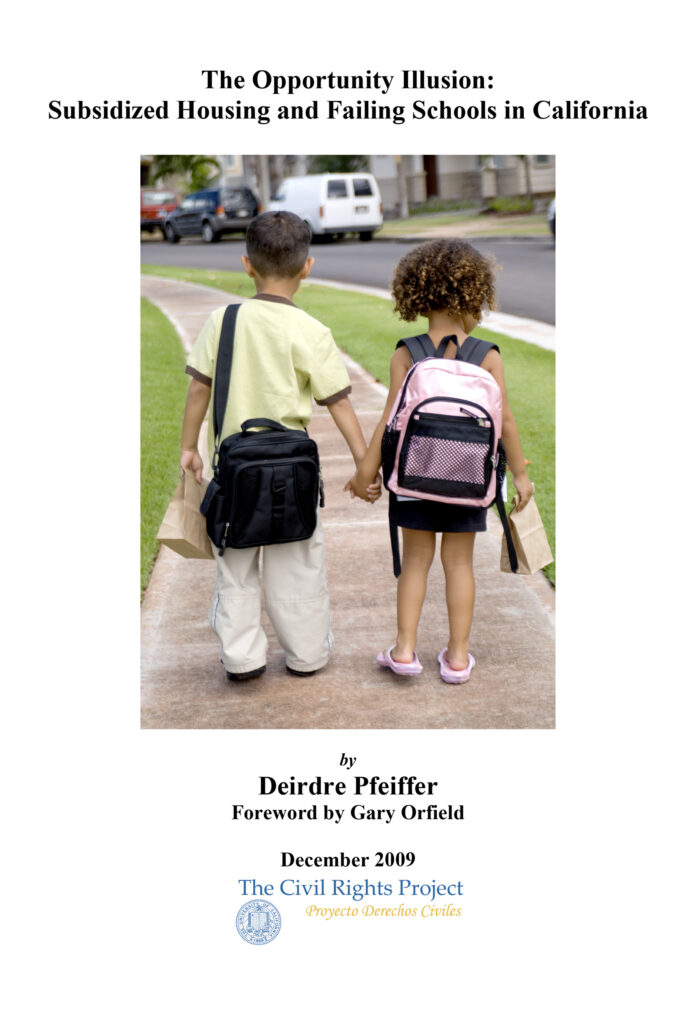Executive Summary
Since the late 1980s, the Low-Income Housing Tax Credit (LIHTC) program has funded the bulk of subsidized development nationwide, enabling the construction of over 100,000 units targeted to lower income households in California alone (California Tax Credit Allocation Committee 2009c). Yet, by not encouraging the siting of projects in racially integrated areas, the Department of the Treasury’s Internal Revenue Service (IRS), which administers the program, has failed to enforce Title VIII of the 1968 Fair Housing Act. A major concern is that units funded through the program, specifically those targeted to families, are concentrated in poor, minority communities that feed into underperforming schools.
This study tests this claim by examining how siting decisions affect families’ neighborhood conditions and educational opportunities in Southern California. Between 2000 and 2005, the average LIHTC unit targeted to families was located in a high poverty, predominately Latino neighborhood. Poverty was a key determinant of a neighborhood’s receipt of LIHTC family units, with a 10% increase in a neighborhood’s poverty rate in 2000 associated with an 87% increase in the odds of receiving family units during the following five years. More heavily Latino neighborhoods, as well as those with existing LIHTC family developments, also were more likely to receive family units.
A primary outcome of LIHTC family units’ concentration in poor, minority neighborhoods is that they feed into segregated and underperforming schools—conditions that exacerbate cycles of poverty and disadvantage. The average Southern California LIHTC family’s nearest public high school was 84% minority and 57% free and reduced lunch eligible, substantially higher than the average high school’s 74% minority and 45% free and reduced lunch enrollment. In turn, families’ nearest high schools in Los Angeles and Ventura County had Academic Performance Index (API) and SAT scores close to 100 and 200 points below the average respectively.
Four changes to LIHTC law are needed to enable the social mobility of children served. First, the IRS should affirmatively further racial integration in LIHTC siting policy or transfer its management to HUD, which operates under this mandate. Second, federal LIHTC law should give a tax credit boost to developers who site family units in high cost (rather than high poverty) neighborhoods. Third, state allocation committees should consider the quality of public schools assigned to proposed LIHTC family projects in awarding tax credits. Finally, the IRS and state allocation committees should enforce H.R. 3211, which requires reporting of tenants’ race and ethnicity in LIHTC buildings (National Commission on Fair Housing and Equal Opportunity 2008). This would enable monitoring by local fair housing organizations and ensure equal access to buildings located in the highest quality communities.
In compliance with the UC Open Access Policy, this report has been made available on eScholarship:
